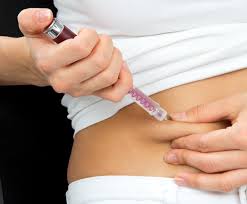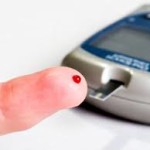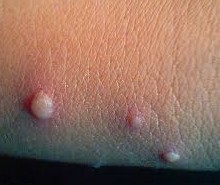Why to move from Oral Medications to Insulin
April 25, 2017 by admin
Filed under Tips for Ayurveda
 These days we hear a lot of diabetic people moving from Oral Medications (tablets) to Insulin shots/ injections. There is a lot of frustration when the transition is in progress. The diabetics undergoes lot of pressure to digest the fact that a big change has happened. Mind as well as body of the patient needs to get accustomed to the new schedule.
These days we hear a lot of diabetic people moving from Oral Medications (tablets) to Insulin shots/ injections. There is a lot of frustration when the transition is in progress. The diabetics undergoes lot of pressure to digest the fact that a big change has happened. Mind as well as body of the patient needs to get accustomed to the new schedule.
Types of Diabetes
Diabetes comes in two types. Type 1 diabetes occurs when the body does not produce enough insulin on its own. To treat type 1, you must restore the proper amount of insulin—either by taking insulin (through injection or inhalation), or by receiving a transplant. Type 1 cannot be treated with oral medications.
Type 2 diabetes occurs when the body produces enough insulin, but gradually becomes insulin resistant—that is, loses the ability to process insulin. Type 2 is a progressive disease, and it usually requires a progression of treatments to keep it under control.
Recommendations for Type2 diabetics
Type 2 is usually controlled first through diet and exercise, which improve your body’s ability to process its insulin. For most type 2 diabetics, however, diet and exercise changes are not enough. The next step is oral diabetes medication. Moreover, most type 2 diabetics eventually stop producing enough insulin, and often cease insulin production altogether. As a result, many type 2 diabetics will ultimately need insulin therapy in combination with their pills.
Most of Type 2 patients start with oral medications along with diet and exercise. But after a number of years, dosage is gradually increased later, these diabetics have reached the limit of what oral medications can do for them, and need to start injecting insulin to keep their blood glucose at a safe level. Control diabetes naturally ,follow schedule of exercise and monitor diet.
For most of the Type 2 patients a combination of oral medication and insulin therapy is the most effective way to control their diabetes and delay or even prevent the onset of complications. Type 2 is a progressive disease, and it usually requires a progression of treatments to keep it under control.
Insulin-Fear factor for diabetics
Most of the diabetics fear due to the pain of injections, the temperature control required for insulin injections especially when they are traveling, privacy factors to inject considering hygiene practices.
Insulin pens are convenient, very accurate and not noticeable. With the needles that is available in market today, you cannot feel an injection of insulin into the layer of fat beneath your skin.
Family members of the diabetic patient have to be supportive and patient when the transition is in progress from oral medication to Insulin.
Even people who are very reluctant to start taking insulin quickly learn to make it part of their routine, no more disturbing than brushing their teeth. And when you see how much better you feel, you’ll wonder why you ever hesitated earlier!
Please add a comment and, if you like the post, feel free to share it with your friends. You can also visit our Facebook page and Google plus page for more insight on other articles.
Also read:
Watch out for the Warning Signs of Diabetes
11 Recommendations to Prevent Diabetes Naturally
Cure Diabetes with Raw Ladies finger
How to prevent and Control diabetes
Jamun (Black Plum) Controls Blood Sugar levels
Can you eat Chicken and Eggs during Chicken pox?
April 3, 2017 by admin
Filed under Tips for Ayurveda
 Chicken pox is caused by the varicella-zoster virus. Chicken pox is highly contagious disease and generally affects children. When a person is infected with chicken pox you will see a breakout of rashes all over the body which appears in the form of pus filled boils.
Chicken pox is caused by the varicella-zoster virus. Chicken pox is highly contagious disease and generally affects children. When a person is infected with chicken pox you will see a breakout of rashes all over the body which appears in the form of pus filled boils.
The person infected with chicken pox will have low appetite. The first 2 days the child will feel weak and fatigued. He’ll not feel like eating much quantity of food and will rely on liquid diet. After the fourth day the child will improve on food intake.
The number of blisters will keep increasing as days progress. You will see fresh ones near the genitals, palms, feet and sole, mouth and scalp area too.
The most important question that will come to your mind is with regard to the kind of food your child can and cannot consume. Make sure that his/her diet includes foods that are rich in nutrients, vitamins and minerals. Importance is placed on eating fruits and vegetables.
Foods to avoid during Chicken pox
- In India people avoid eating non-vegetarian foods like chicken, meat, fish and eggs etc. Considered to be hot and aggravate the boils.
- Quantity of salt is reduced to avoid itching. Ghee addition, oily foods are avoided to ensure proper digestion. Spicy foods are totally avoided to minimize itching and easy digestion.
- Avoid citric fruits and juices as it may cause itching.
- Avoid wheat flour, by-products of wheat-All purpose flour (maida), bread as it will increase heat in the body.
- Do not use dhals -tur dhal, moong dhal, chick pea (chana) etc as it can cause pus in the boils. Usually potato is also avoided along with masalas while cooking vegetable curries.
Foods to eat during Chicken pox
- Consume fruits and vegetables in plenty. Banana, Water melon, berries, guava are ideal. Avoid citric fruits as it may cause itching.
- Eat curds, drink butter milk to cool the body.
- Serve porridge with coconut chutney ( Thenga chammandhi Recipe; Grind ½ cup grated raw coconut, shallots:5 (or) ½ an onion, small piece of tamarind,1/2 tsp of grated ginger, ½ tsp chilli powder, 2-3 curry leaves, salt: to taste, Grind all ingredients with 3 tsp of water).
- Use non stick pan to make dosa, appam. Puttu is a steam cooked rice recipe, ideal during chicken pox. Mix with yellow color small banana.
- In South India people consume rice in the form of puffed rice or flattened rice mixed with chopped banana or fruits.
Do’s during Chicken pox
- Drink lots and lots of water and keep body hydrated.
- Spread neem leaves on the bed cover such that the patient’s skin will be in contact with the leaves.
- Use neem leaves to avoid itching sensation. Gently fan the spots with neem fronds (tender leaves) if you feel itchy. The essential oils from neem leaves will provide soothing feeling.
- If itching is severe, mix 1 tspn of baking soda in 2 glasses of water and then sponge the body with this solution.
- After the rashes have dried, a lengthy bath can be planned for your child. Heat water in which neem leaves and fresh turmeric has been added I day in advance. The next day heat the same water and then bath. This water has medicinal properties with antibacterial properties as well.
- Wear loose, light colored cotton clothes. Also recommended to use light colored bed spreads.
- Doctors advise to apply Calamine lotion over the boils to get relief from itching. Gives cooling affect.
Dont’s during Chicken pox
- Do not scratch vigorously and break the boils. Water will ooze and infection will spread further. It will also lead to ugly scars.
- Do not leave the person unattended during the initial 3 days. The weakness will be severe and the patient will faint with exhaustion due to fever and body pains.
- Do not send the infected person out of the house-school, play school or work as it is contagious.
- Do not bathe till all the boils and rashes have dried. Skin should not come in contact with water. Avoid medicated soaps.
The Ayurvedic name for chicken pox is Laghu Masurika. Generally speaking, the disease would take between 10 and 15 days to run its course. Ayurveda recommends fanning with neem leaves, application of neem paste, honey on the blisters. Oatmeal soak is another option for sponging the body.
 Chicken pox is a contagious disease and can spread quite easily from person to person. Doctors too inform that the chicken pox virus spreads when the rashes starts falling. The most contagious time is during the initial 2 to 5 days of the illness. The chicken pox virus may spread through contact with infected droplets that are released into the air while coughing and sneezing.
Chicken pox is a contagious disease and can spread quite easily from person to person. Doctors too inform that the chicken pox virus spreads when the rashes starts falling. The most contagious time is during the initial 2 to 5 days of the illness. The chicken pox virus may spread through contact with infected droplets that are released into the air while coughing and sneezing.
As chicken pox is caused by a virus, antibiotics are not helpful. Usually treatment for chicken pox involves topical applications in order to reduce discomfort caused by the rash. Medication may also be given to reduce fever and pains.
 Neem leaves play a key role in Ayurvedic treatment for chicken pox. Neem has antiviral properties and hence combats the varicella zoster virus. It quickens the drying of the fluid in the blisters, and reduces the itchy and scratchy sensation that the chicken pox blisters cause.
Neem leaves play a key role in Ayurvedic treatment for chicken pox. Neem has antiviral properties and hence combats the varicella zoster virus. It quickens the drying of the fluid in the blisters, and reduces the itchy and scratchy sensation that the chicken pox blisters cause.
Massive cleaning is to be done in the home after the infected person has had bath and no further symptoms are seen in the other family members.
There is another condition called shingles which is another form of chicken pox affected by the nerves. Read more in upcoming article.
Please add a comment and, if you like the post, feel free to share it with your friends.







